How to Measure Brand Reputation using Web and Social Media Monitoring
Table of contents
Reputation. Brand reputation. Measuring brand reputation. At a first sight, it strikes a little absurd – how on earth can you measure people’s opinions, feelings and expectations about a brand and put them into numbers? Can you at all? You can – at least a slice of it. Here’s how to measure brand reputation using Web and social media monitoring.
It’s important to remember that measuring brand reputation using Web and social media monitoring tools is just one side of the story. In general, there’s more data about your brand you can measure. It’s good to consider NPS surveys, SEO reputation and customer satisfaction as well… and this video gives you a brief rundown of the top 10 things you should consider if you want to manage and protect your business reputation.
Since our cup of tea at Brand24 is called Web and social media monitoring, this blog post will only discuss how you can measure brand reputation using our own Brand24. Only so much.
Is it possible to measure reputation at all?
It depends how you look at it.
At one hand, there’s no formula to extract a single number or other measurable indicator of the condition of a brand’s reputation.
On the other hand, you can get a few other numbers which put next to each other and compared against competitors or past results can make a good picture of how the reputation of your brand performs.
I’ll discuss a few of which you can find in Brand24.
Brand reputation metrics
Of all data our Web and social media monitoring tool provides, there’s a few data points particularly valuable for measuring brand reputation. We can call them brand reputation metrics and they include:
- Social media reach
- Share of voice
- Sentiment analysis
- Online Reputation Score
Let’s see what they tell you.
Social media reach
Social media reach describes the number of people who might have come across your brand (and all relevant content) in social media.
Brand24 calculates social media reach on the base of the number of followers and subscribers for social media platforms and YouTube.
- Social media reach as a brand reputation metric can illustrate how popular your brand is in the sense of how many people it reaches
- Reach might also indicate how big the profiles talking about your brand are. If the reach is high, it can tell that there are some social media profiles with large following talking about your brand, for example, influencers or industry media
Share of voice
Share of voice is one of the most popular metrics used in public relations and can also help measure brand reputation. This metric stands for the number of conversations about your brand divided by the number of conversations about your industry.
- Share of voice is another indicator of popularity. It illustrates how much of a conversations within your niche, industry, product, or service is devoted to your brand. It’s expressed in percentages
- Share of voice depicts popularity and awareness of a brand in the minds of consumers
Sentiment analysis
Sentiment analysis technologies across the board have a lot to learn. Some of the common problems they face include:
- Detecting irony
- Detecting sarcasm
- Detecting contrastive conjunction
- Anaphora resolution
- Named-entity recognition
Although sentiment analysis has its weaknesses, it still holds tremendous value and can become one of your brand reputation metrics. You just need to forgive and forget, and manually filter out irrelevant pieces of text.
- Sentiment analysis can point out weaknesses of a brand, be it product or service-wise
- It can similarly emphasise strengths and show what consumers value most
How to measure brand reputation?
“Brand reputation can be measured through sentiment analysis, reviews, social mentions, and engagement quality. I look at what people are saying and how they’re saying it. Positive perception is earned, and the data shows if your messaging is landing the way you intend.”
Phil Pallen, Brand Strategist
How to measure brand reputation in Brand24?
Create your free trial account. From this moment, your free account will be active for 14 days. No credit card required. It should be enough to see if it works for you.
You will need to create two projects:
- One to monitor your brand and calculate social media reach and do sentiment analysis.
- Another one to monitor mentions about your industry, niche, product, service and to calculate your share of voice.
Here’s what to do.
1. Social media reach and sentiment analysis
In this step, you create a project to monitor online mentions about your brand on the Web and in social media.
Inside the project creator, enter keywords relevant to your brand, including:
- Company name
- Product / service name
- Branded hashtag
- Website address
- Social media handle
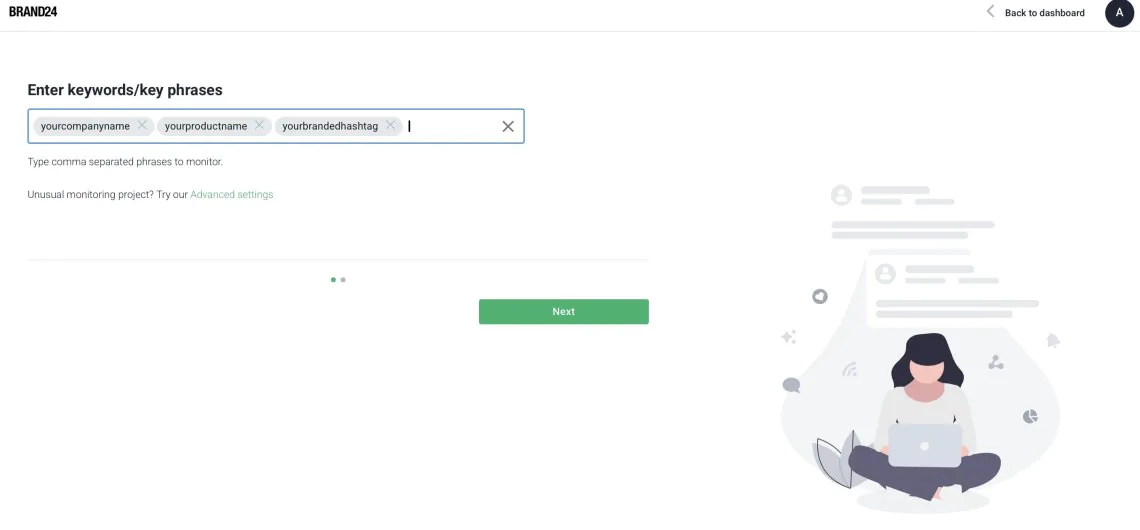
From the moment you create the project, Brand24 will collect your mentions in the Mentions tab.
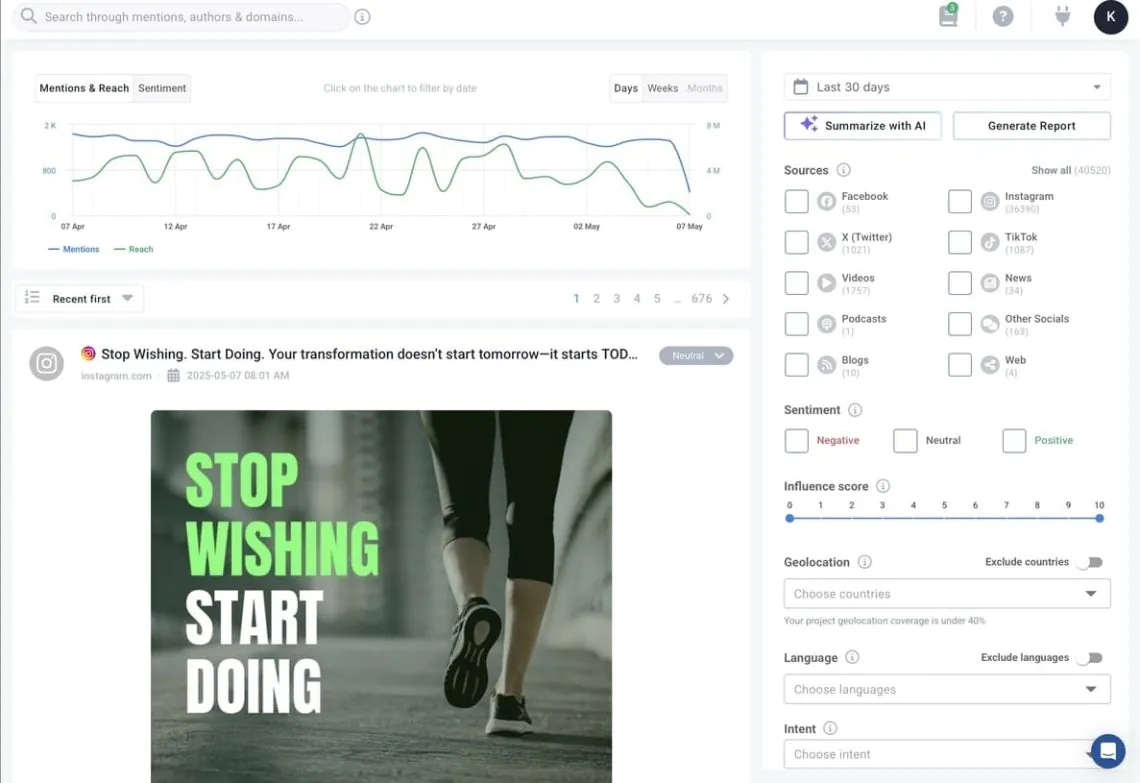
Let’s now calculate social media reach and do sentiment analysis.
Social media reach
To discover what social media reach your company name, product / service name, branded hashtag or website address generate, go to the Summary tab.
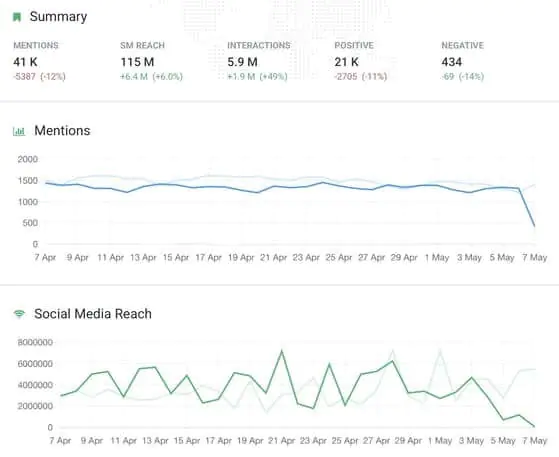
Inside, there’s a numerical summary of data. One of the metrics out there is Estimated social media reach of the keywords you monitor in this project.
To learn more about social media reach, see my post How to calculate social media reach.
Sentiment analysis
To see sentiment analysis data, you need to similarly go to the Analysis tab and the same numerical summary. It shows the number of negative and positive mentions.
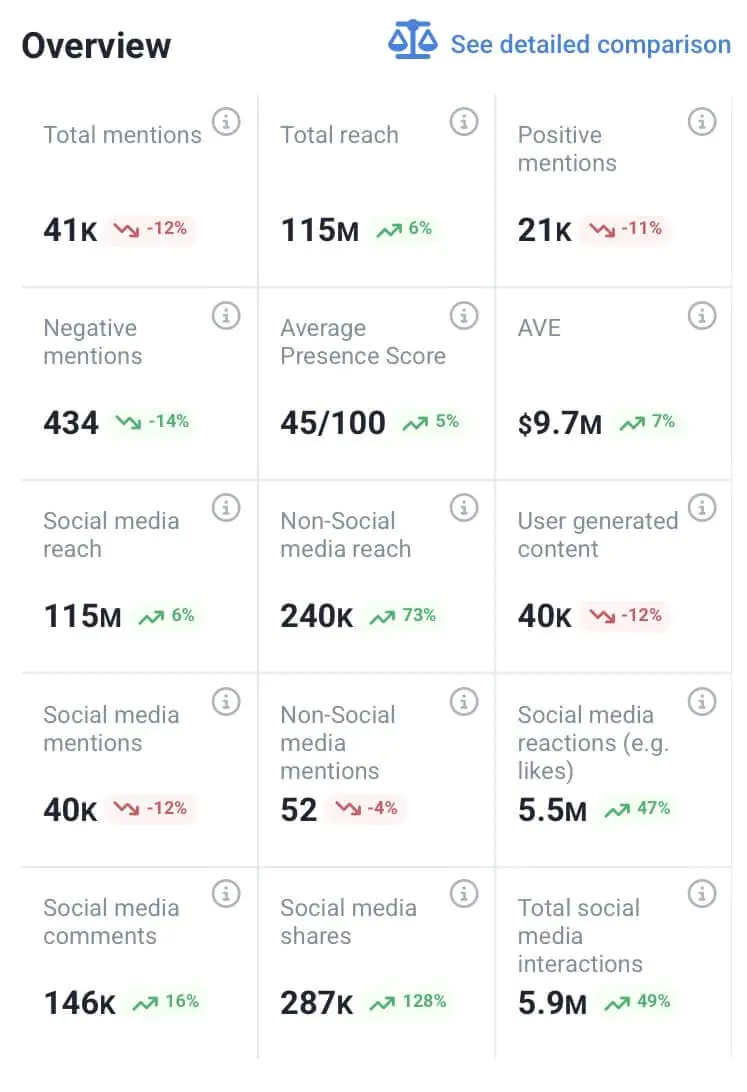
In Brand24, you can also compare your sentiment analysis data to the similar time period in the past. To see this comparison, you go to the Summary tab and the section with charts where all your numbers and percents are.
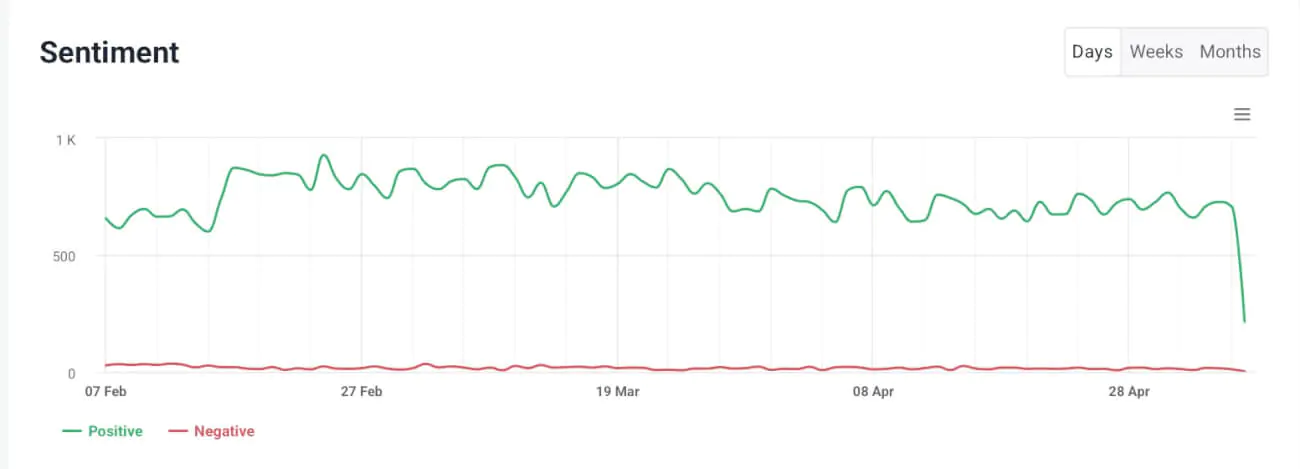
2. Share of voice
Create another project but this time enter keywords describing the niche you’re in:
- Industry
- Product
- Service
Once you create your project, go to Mentions tab. In there you’ll find an overall number of collected mentions – conversations about your niche.
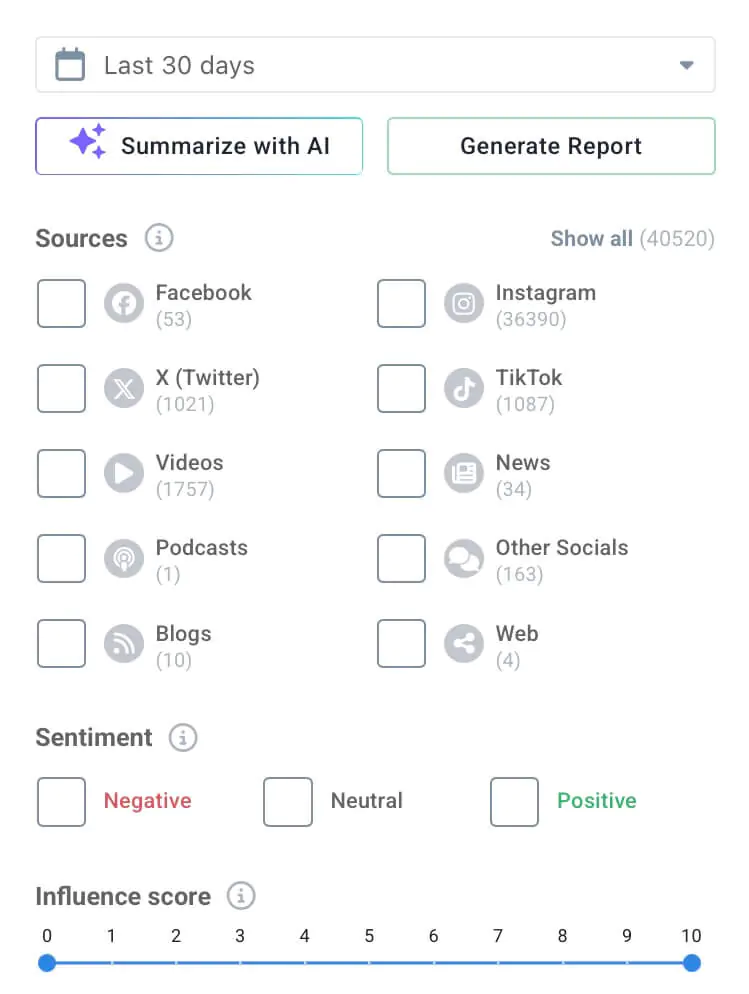
Now, you need to find how many times they mention your brand.
To do so, use Boolean search right below sources and above mentions. To discover how many times your brand was mentioned exactly, use {is} brand operator to show only mentions containing your brand name.
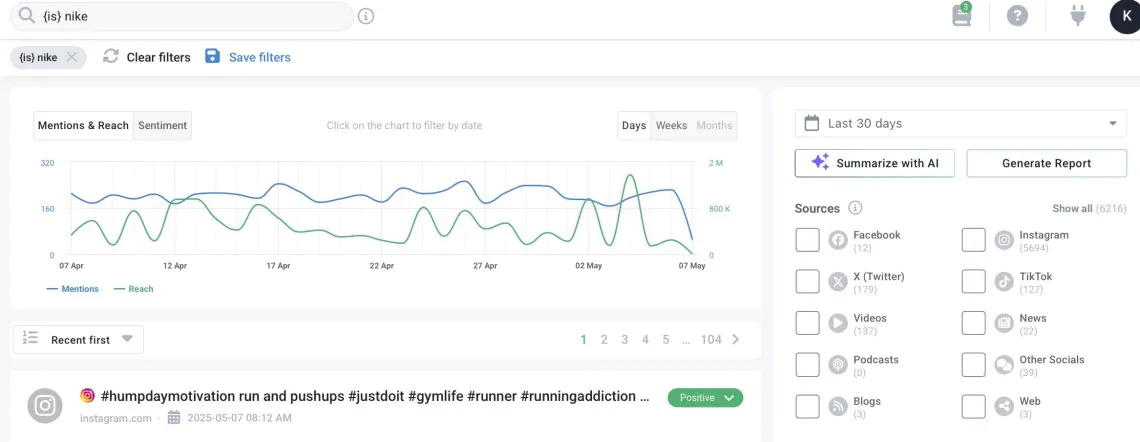
Brand24 will show you a number. To calculate your share of voice, divide the number of mentions about your niche by the number of mentions about your brand.
There you have it.
To learn more about share of voice, see Marta’s post about how to measure the share of voice.
Conclusion
As seen above, using Web and social media monitoring, you’re able to measure some parts of brand reputation: sentiment analysis, social media reach, share of voice.
These numbers, however, are valuable only when put in a context. To have a point of reference you can, for example, compare your results with the past, or against your competitors. To do the latter, you will need to follow the same steps also for your competitors’ brands.
HANDPICKED RELATED READS:
Benefits of brand reputation monitoring
Top 10 brand reputation monitoring tools

